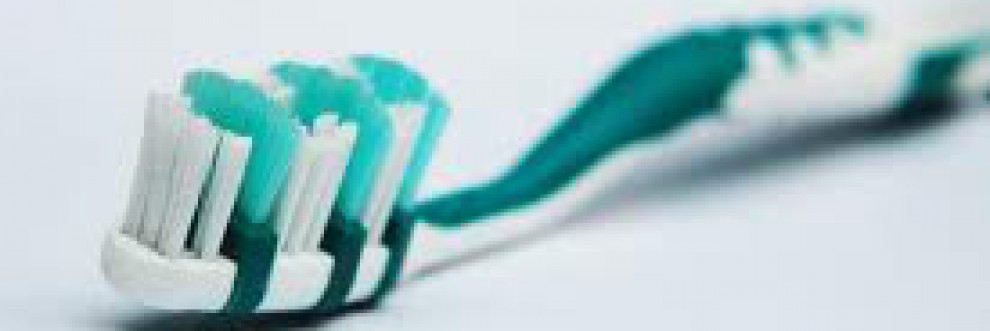CASE 1.
She was a patient of the clinic for many years, a 87 years old lady. No significant findings in medical history. Vital signs were within normal limits. No medicines are currently being taken.Patient is holistic. ( She does not use any medications or pharmaceutical product).No abnormal extra oral or intra oral significant findings.
Treatment Management:
It took two visits for this patient. On the first visit I did assessments up till calculus detection and was not allowed to continue assessment as the patient had many cavities, almost on every tooth. So she was referred to fix them first and then to come back to continue treatment. She had fixed half of them and returned with a letter that she was under the care of DDS and could clean her teeth. I got permission to continue her treatment. It was interesting she had rather healthy gums for her age but a lot of cavities. She was holistic and was using some organic toothpaste with magnesium chloride. The point of that paste was that enough amount of magnesium in the body helps to intake calcium. Also it has some antimicrobial elements. It does not have fluoride. I thought it could be one of the reasons why she has so many cavities. Besides her salivary production was a bit decreased evidently due to her age. But she didn’t have dry mouth and didn’t use any medications. I informed the patient that Fluoride is good for strengthening enamel and recommended her at least rinse with fluoride. But the patient was skeptic and preferred to do a research first. My professor recommended her to use an organic rinse coconut oil meanwhile. I didn’t use any fluoride varnish due to her holistic believes and also because she still had many cavities. That was very interesting to work together with that kind of a patient to find a way to help her take care of her teeth.
CASE2
Patient is: P.A. age:36 years old, white female. heavy/type1.
Assessment: Patient had nothing significant in medical history to report. Her vital signs were within normal limits. Patient did not smoke. No premedications required. No systemic conditions. No medicines are currently being taken.
Oral Pathology: no significant findings
Dentition: There were many intact restorations,attritions.
Periodontal: patient had excessive bleeding upon probing, generalised moderate gingival inflammation. Pocket depths 3-4mm.
On the 1st visit the patient mentioned that she had some bleeding in the anterior area, in mandible while she was brushing. The patient appeared to be a heavy type. After assessments I did homecare: disclosed her teeth and wrote down the plaque score, it was 1,3. I showed the patient the results and explained what the score means. As she had a high score of plaque I decided to teach her brushing technique. I showed her Bass modified method. The patient sounded very interested. Then I started scaling. I must admit that it was rather inconvenient to clean her teeth, especially in the posterior areas because of her narrow arch and presence of all the wisdom teeth. I constantly struggled to remove calculus. There was a roughness often left on the teeth, especially in distal areas. The patient noticed her teeth were a bit sensitive that’s why I had to use often topical anesthetic. That worked very well for her. Besides I want to notice that the patient was a vegetarian and people who eat a lot of vegetables and fruits have a tendency to have a lot of starch on teeth and that makes plaque to attach easily. I informed the patient about it .
During the next visit I did reevaluation of the scaled area. The patient continued to have generalized bleeding. Gingiva was still bulbulous and inflamed in anterior aria mandible. I disclosed teeth, the plaque score was the same as previous. That disappointed me as I tried my best to explain the patient how to brush her teeth. The patient explained she had little time to brush well. I was not sure whether she really did not have time or was not very interested. I asked her if she had any problems with new brushing method. But she said it was fine, different from what she used but ok. Most of plaque she had lingually all quadrants so I instructed patient to clean better lingually. The instructor was also surprised with high bleeding and asked if she used any prevention medications or if she is in a menstrual cycle period now. Patient said she had periods on that day. The instructor explained that bleeding could be a bit higher on such days as the result of change in hormone level. I recommended the patient a rubber tip which can stimulate and massage the gums. The instructor said that can help lower bleeding. The cleaning was very difficult to do because the patient had a lot of bleeding.
The last visit when patient came back the first thing she said she didn’t know whether it was because of scaling or using rubber tip but her bleeding she usually had during brushing has gone. It was very nice to hear that. That’s the best appreciation of your job. After checking I noticed there was no inflammation , nice pink gingiva, no bulbulous areas, decreased bleeding. After disclosing plaque score was 0. I could not believe. I think I was happier than the patient herself. I introduced the use of floss and mouth rinse. Scaled all four quadrants with cavitron and hand instruments. Polished with prophy cup. I was glad that the patient was compliant and could enjoy the result of the cleaning.
These cases probably are not unique but they are the result of my work both clinical and interpersonal together with the patient.That’s what I aim to become a good Dental Hygienist.



